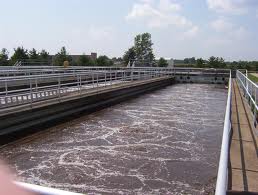Water Treatment Woes

The nation's water treatment infrastructure is aging and in dire need of fixing. Photo by
In early August, WCAX reported that a worker error led to discharge of a half-million gallons of untreated sewage to the Winooski River from the Essex Junction wastewater treatment plant. The incident was one of at least thirty cases of sewage overflows in Vermont this year. New York is not immune from such problems either. The Syracuse Post-Standard reported that billions of gallons of untreated sewage enter New York’s waters each year. These incidents provide a stark reminder of the woeful state of water treatment (both waste and drinking) in the region and the country.
The American Society of Civil Engineers recently gave our nation’s drinking water infrastructure a grade of D-. As a consequence of the poor condition, there are 240,000 water main breaks each year in the United States. New York State alone predicts a $38.7 billion price tag for upgrading water supply systems. Vermont’s drinking water infrastructure needs an investment of $395 million over the next twenty years.
Nationwide EPA estimates that our drinking water systems require an investment of $334.8 billion over the next twenty years. Of that, 60% is needed to replace pipes and the like used to distribute water, 22% is needed to update treatment of water, and 11% is needed for better storage. Half of the nation’s water infrastructure was classified as poor, very poor, or life-elapsed meaning it should have already been replaced.
Out-dated water supply systems not only risk failure, they are also inefficient. Old pipes are more likely to leak, losing not only the clean water they contain, but also all the energy that went into cleaning the water and pumping it through the pipes. Leaking pipes lose an estimated six to seven billion gallons of already treated clean drinking water each day, 14% of all treated water.
Addressing the failing water infrastructure in this country will require higher taxes. Our entire society must pool resources to tackle an issue that has only grown more dire over time.
